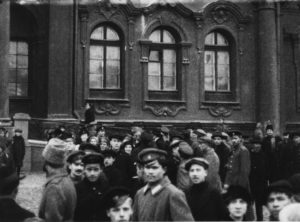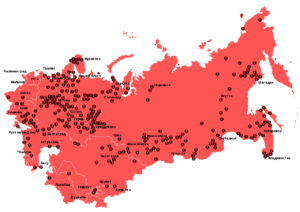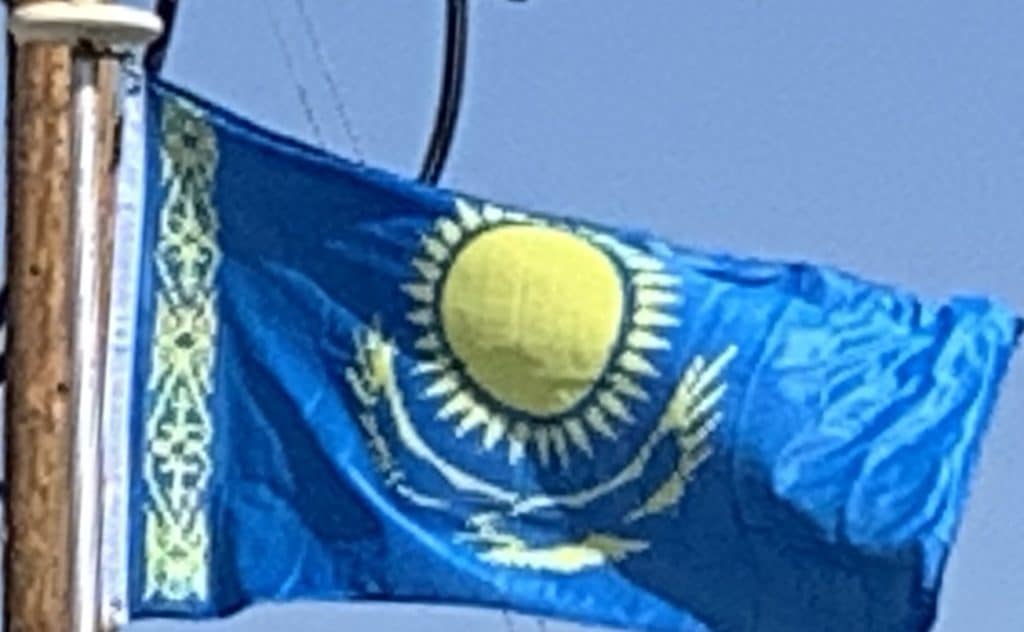The competition for land and water that ensued between the Kazakh and the newcomers caused great resentment against colonial rule during the final years of the Russian Empire. The most serious uprising, the Central Asian Revolt, occurred in 1916. The Kazakh attacked Russian and Cossack settlers and military garrisons. The revolt resulted in a series of clashes and in brutal massacres committed by both sides. Both sides resisted the communist government until late 1919.
Soviet Union:
Following the collapse of central government in Petrograd in November 1917, the Kazakhs (then in Russia officially referred to as “Kirghiz”) experienced a brief period of autonomy (the Alash Autonomy) to eventually succumb to the Bolsheviks′ rule. On 26 August 1920, the Kirghiz Autonomous Socialist Soviet Republic within the Russian Soviet Federative Socialist Republic (RSFSR) was established. The Kirghiz ASSR included the territory of present-day Kazakhstan, but its administrative centre was a mainly Russian-populated town of Orenburg. In June 1925, the Kirghiz ASSR was renamed the Kazak ASSR and its administrative center was transferred to the town of Kyzylorda, and in April 1927 to Alma-Ata.

Soviet repression of the traditional elite, along with forced collectivisation in the late 1920s and 1930s, brought famine and high fatalities, leading to unrest. During the 1930s, some members of the Kazakh cultured society were executed – as part of the policies of political reprisals pursued by the Soviet government in Moscow.
On 5 December 1936, the Kazakh Autonomous Soviet Socialist Republic (whose territory by then corresponded to that of modern Kazakhstan) was detached from the Russian Soviet Federative Socialist Republic (RSFSR) and made the Kazakh Soviet Socialist Republic, a full union republic of the USSR, one of eleven such republics at the time, along with the Kirghiz Soviet Socialist Republic.
The republic was one of the destinations for exiled and convicted persons, as well as for mass resettlements, or deportations affected by the central USSR authorities during the 1930s and 1940s, such as approximately 400,000 Volga Germans deported from the Volga German Autonomous Soviet Socialist Republic in September–October 1941, and then later the Greeks and Crimean Tatars. Deportees and prisoners were interned in some of the biggest Soviet labour camps (the Gulag), including ALZhIR camp outside Astana, which was reserved for the wives of men considered “enemies of the people”. Many moved due to the policy of population transfer in the Soviet Union and others were forced into involuntary settlements in the Soviet Union.

The Soviet-German War (1941–1945) led to an increase in industrialization and mineral extraction in support of the war effort. At the time of the USSR’s leader Joseph Stalin’s death in 1953, however, Kazakhstan still had an overwhelmingly agricultural economy. In 1953, Soviet leader Nikita Khrushchev initiated the Virgin Lands Campaign designed to turn the traditional pasture lands of Kazakhstan into a major grain-producing region for the Soviet Union. The Virgin Lands policy brought mixed results. However, along with later modernizations under Soviet leader Leonid Brezhnev (in power 1964–1982), it accelerated the development of the agricultural sector, which remains the source of livelihood for a large percentage of Kazakhstan’s population. Because of the decades of privation, war and resettlement, by 1959 the Kazakh had become a minority in the country, making up 30% of the population. Ethnic Russians accounted for 43%.
